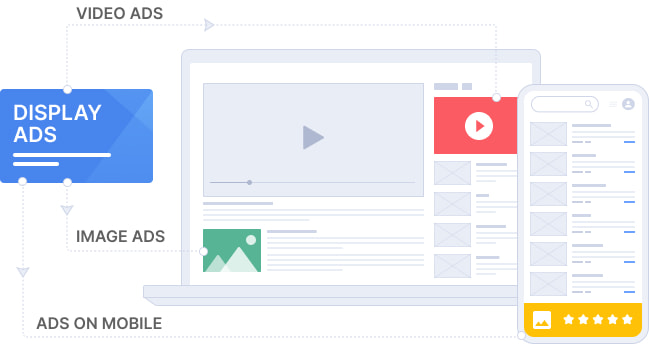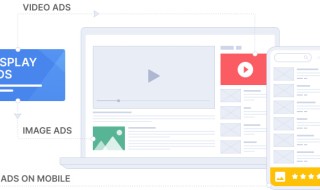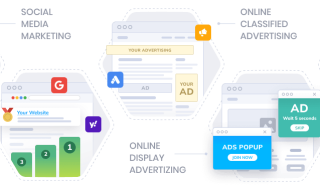
In the dynamic realm of digital marketing, display advertising stands as a potent tool for capturing consumer attention and driving website traffic. However, the critical question remains: what unfolds the moment a consumer, drawn in by your carefully designed banner or image, clicks on that ad? Grasping the intricacies of this journey, from the initial click to a potential conversion, is paramount for optimizing display ad campaigns and maximizing your return on investment.
The Moment of Opportunity: The Initial Click and its Immediate Aftermath
The click itself represents a pivotal moment, a brief window where a consumer's interest is sparked. The subsequent events are shaped by several factors, all of which marketers can influence. Immediately following the click, the user is directed to a landing page. This initial interaction is crucial. The landing page must be a direct continuation of the ad's message. A mismatch between the ad's promise and the landing page's content will inevitably lead to a high bounce rate, as users quickly abandon the site, feeling misled or frustrated. The landing page should be visually and contextually consistent with the ad, reinforcing the initial interest and providing a seamless transition.
Simultaneously, tracking mechanisms are activated, often leveraging cookies and JavaScript tags to record user behavior. This includes:
- Source and time of the click: Pinpointing where the user came from (e.g., specific website, ad placement) and when they engaged.
- Subsequent website actions: Tracking the user's navigation, page views, time spent on site, and interactions with various elements.
- Device and browser information: Understanding the user's technical environment to optimize for different platforms.
This data is essential for assessing campaign performance, understanding user behavior, and refining future advertisements. Analytics platforms, such as Google Analytics, diligently record every interaction, allowing marketers to trace the user's journey, identify drop-off points, and analyze conversion funnels.
The user's experience on the landing page significantly impacts their likelihood of conversion. A clean, intuitive, and mobile-friendly design is vital, coupled with rapid loading speeds. Users are impatient and will abandon slow-loading pages. Clear calls to action (CTAs) guide users towards the desired action, whether it's a purchase, sign-up, or download. Users will also quickly assess the landing page's relevance and value, making compelling and concise content, along with high-quality visuals, essential for engagement. The content should be tailored to the user's intent, providing the information they need to make an informed decision.
The conversion path, the sequence of actions leading to a desired outcome, is another critical aspect. A well-defined path minimizes friction and guides users smoothly towards the intended goal. This involves creating a clear and logical flow, removing unnecessary steps, and providing clear instructions.
Optimizing the Journey for Sustained Success
To enhance the effectiveness of display ad campaigns and cultivate long-term engagement, optimization is necessary at every stage. Key strategies include:
- Landing page optimization: Ensuring relevance, mobile-friendliness, fast loading, clear CTAs, and A/B testing to refine performance. This includes optimizing for different devices and screen sizes.
- Targeting and segmentation: Reaching the right audience with tailored ads by leveraging demographic, behavioral, and contextual targeting. This enables more precise message delivery.
- Retargeting: Showing ads to users who previously interacted with your website or ads, reminding them of your brand and products. This can involve dynamic retargeting, showcasing specific products they viewed.
- Conversion tracking and analytics: Monitoring campaign effectiveness and identifying areas for improvement by tracking key performance indicators (KPIs) such as click-through rates (CTR), conversion rates, and cost per acquisition (CPA). This also involves analyzing user behavior to understand drop-off points and optimize the conversion funnel.
- Ad creative optimization: Continuously testing and refining ad creatives through A/B testing and multivariate testing. This involves experimenting with different images, headlines, copy, and formats to identify what resonates best with the target audience.
- User experience (UX) optimization: Ensuring that your website is easy to navigate, provides a seamless and intuitive experience, and minimizes friction. This includes optimizing for mobile devices, improving site speed, and providing clear and concise information.
- Post-click engagement: Engaging users after they have converted, building relationships, and fostering customer loyalty through email marketing, social media, and personalized offers.
By understanding and optimizing each step of the journey, from the initial ad click to the final conversion and beyond, marketers can significantly improve the performance of their display ad campaigns, drive more valuable conversions, and cultivate lasting customer relationships.



 Phone Consultation
Phone Consultation
 Request a quote
Request a quote
 Text a Message
Text a Message